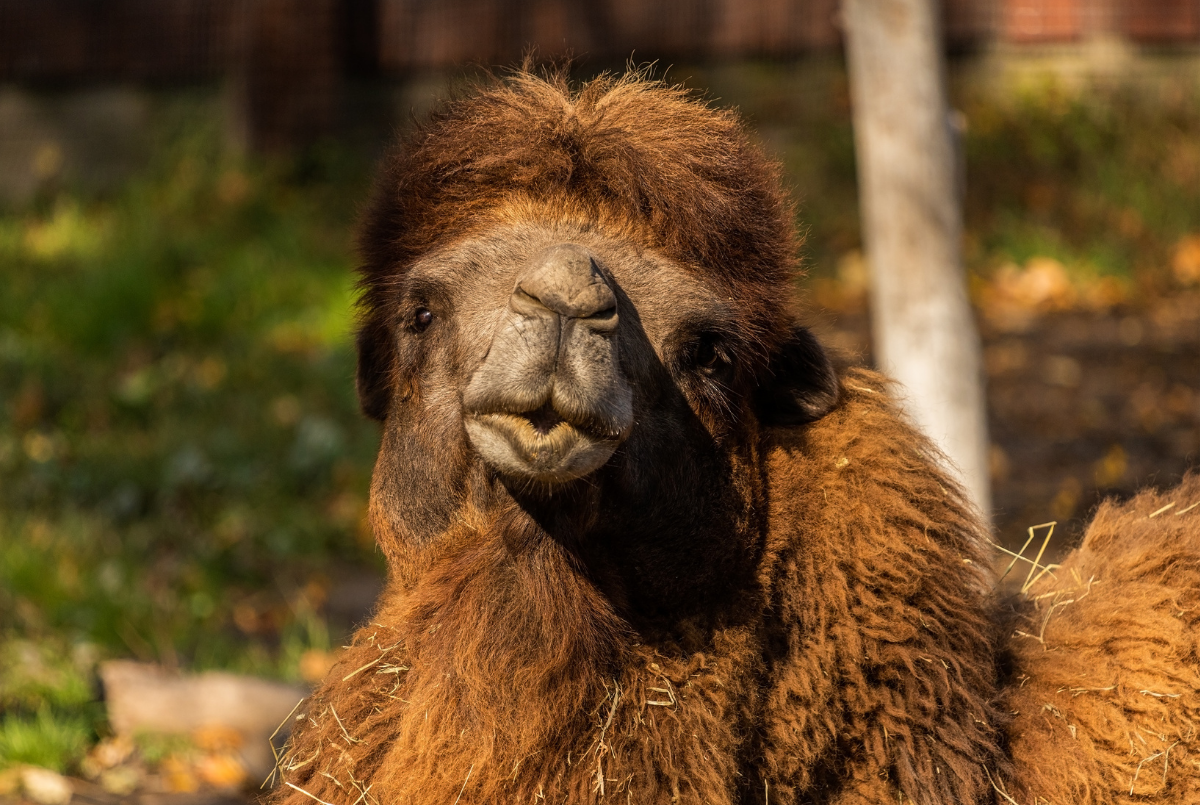Bactrian Camel

Basic Information:
Scientific Name: Camelus bactrianus
Habitat: Bactrian camels can be found in the steppes and deserts of Northeast Asia (particularly the Gobi desert of Northern China and Southern Mongolia).
Diet: Bactrian camels eat leaves, grasses, and shrubs.
Size: 5.2 to 5.9 feet tall / 10 to 11.5 feet long
Weight: 660 to 2,000 pounds
Lifespan: 17.8 years according to AZA Species Survival Statistics
Distribution Map:
I.U.C.N. Conservation Status:

What does this mean?
Critically Endangered – a species determined by the International Union for Conservation of Nature (I.U.C.N.) to possess an extremely high risk of extinction as a result of rapid population declines of 80 to more than 90 percent over the previous 10 years (or three generations), a current population size of fewer than 50 individuals, or other factors (such as severely fragmented populations, long generation times, or isolated habitats).
Our Bactrian Camels
Najla (Female) – Born May 30, 2005
Furlow (Male) – Born February 26, 2010
About Bactrian Camels:
Unlike their more widely known cousins – the 1-humped Dromedary camels of Northern Africa and the Middle East – the 2-humped Bactrian camels can be found across the Gobi desert of Mongolia and China. Do to their arid climate, a camel’s humps hold fat which can help sustain them during long, dry spells without much food or water. Consequently, the larger and more erect a camels’ humps are helps dictate how healthy they are. Additionally, due to the wildly fluctuating temperatures of their home desert, Bactrian camels have seasonal coats that they grow and shed to help them survive temperatures ranging from more than 100 degrees Fahrenheit to -20 degrees Fahrenheit.
Did You Know?!
- A very thirsty Bactrian camel can drink 30 gallons of water in only 13 minutes.
- Baby Bactrian camels are born with their eyes open and can run when they are only a few hours old!
- While there are plenty of domesticated Bactrian camels, they are actually genetically different to their wild cousins. Unfortunately, the latter are becoming more and more rare with fewer than 400 Bactrian Camels thought to be left in the wild today.
- Bactrian camels were domesticated approximately around 4500 BCE to be used as pack animals due to their unparalleled strength.
